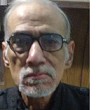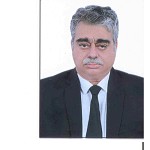General question on fsl
 Sumit Khandelwal
(Querist) 10 April 2013
This query is : Resolved
Sumit Khandelwal
(Querist) 10 April 2013
This query is : Resolved
Sir,
I want to know that, can the document be sent to Forensic Science Laboratory for proper investigation as to the ageing of the paper, ageing of the signature and writing thereon?
Is it possible to find out age of paper, age of writing and age of signature?
Please reply me.
 prabhakar singh
(Expert) 10 April 2013
prabhakar singh
(Expert) 10 April 2013
Sadly, there are no reliable techniques for dating ink on paper despite the efforts of forensic scientists over the last thirty years.
Once an ink line is made on a piece of paper, certain volatile components of the ink disperse into the atmosphere – much effort has been made to determine the rate at which these volatile components do so over time. For example phenoxyethanol present in ballpoint pen ink decreases very rapidly immediately after writing and then more slowly over a longer period. However, by two years there are unlikely to be any measurable changes in the amount of this compound in the ink – any realistic estimate of the age of ink can only be carried out within two years of its writing.
 ajay sethi
(Expert) 10 April 2013
ajay sethi
(Expert) 10 April 2013
check with
Director:
Forensic Science Laboratory
Vidyanagari,
Kalina
Mumbai-4000098
Tel:022-26184337/8
Fax:022-26184401

Guest
(Expert) 10 April 2013
Dear Khandelwal,
It all depends what methods usually the FSL adopts to determine the ageing of the paper, ageing of the signature and writing thereon. In the modern age the following methods are prevalent to determine the age of any substance:
1. Simple study
2. Linguistic peculiarities
3. Paleography
4. Archaeology
5. Carbon-14 dating
6. References by other works
No doubt, in almost every method there are one or the other inherent defects and error elements, which cannot make that possible to detect the exact age. However, Radiocarbon dating (or simply carbon dating) is considered as the most reliable technique of above all that uses the decay of carbon-14 to estimate the age of organic materials. So, only estimated agem not the exact age, is possible to be determined through test by adopting different methods one after the other to arrive at the near exact age as far as possible.
 Adv k . mahesh
(Expert) 10 April 2013
Adv k . mahesh
(Expert) 10 April 2013
Document Division
In the Document division, examination of hand writing, signatures, type scripts, rubber stamp impressions, seal impressions, examination of counterfeit currency notes and lottery tickets, determination of interpolation, substitution, addition, over writings, decipherment of the mechanically and chemically erased writings, decipherment of invisible ink, re-construction of the charred and burnt documents, determination of the order of the sequence of the strokes at the point of intersections, examination of the torned or serrated edges of paper and comparison with their counterparts, determination of the absolute or relative age of the documents, examination of ink, paper and writing implements etc. are carried out.
There are four central forensic laboratories in India, at Hyderabad, Kolkata, Chandigarh and New Delhi.
CFSL Hyderabad is centre of excellence in chemical sciences, CFSL Kolkata (oldest laboratory in India) in biological sciences and CFSL Chandigarh in physical sciences. These laboratories are under the control of the Directorate of Forensic Science (DFS) of the Ministry of Home Affairs. The laboratory in New Delhi is under the control of the Central Bureau of Investigation and investigates cases on its behalf.[2] DR. V K Kashyap is Director DFSS, New Delhi. Dr. Bhattacharya is dir of CFSL Kolkata.Dr S K SHUKLA is currently director of CFSL Chandigarh
 Sudhir Kumar, Advocate
(Expert) 10 April 2013
Sudhir Kumar, Advocate
(Expert) 10 April 2013
A LOT OF OTHER PRIVATE LABS ARE ALSO THERE CHECK NET FOR ADDRESS CONSULT THEM FOR TECHNICAL ADVISE
 Sumit Khandelwal
(Querist) 10 April 2013
This query is : Resolved
Sumit Khandelwal
(Querist) 10 April 2013
This query is : Resolved
 Guest
(Expert) 10 April 2013
Guest
(Expert) 10 April 2013
